Virginia boasts a rich diversity of owl species, each contributing to the intricate tapestry of its ecosystems.
Eight distinctive owl species call Virginia home, captivating enthusiasts and playing crucial roles in the delicate balance of nature.
From the imposing Great Horned Owl to the secretive Eastern Screech Owl, these birds of prey inhabit various habitats across the state. As nocturnal hunters, their adaptations and behaviors are as diverse as the landscapes they inhabit.
This exploration delves into the unique characteristics, habitats, and conservation considerations of the eight captivating owl species found in Virginia, offering a glimpse into their fascinating lives and the importance of preserving their presence in the Old Dominion’s natural realms. Stay focused.
8 Owls Of Virginia
Check out the enchanting world of Virginia’s owls, each with its unique charm and adaptations. From the majestic Great Horned Owl to the elusive Northern Saw-whet Owl, delve into the lives of these fascinating birds.
Learn about their habitats, diets, and the conservation challenges they face in the diverse landscapes of the Old Dominion.
1. Great Horned Owl
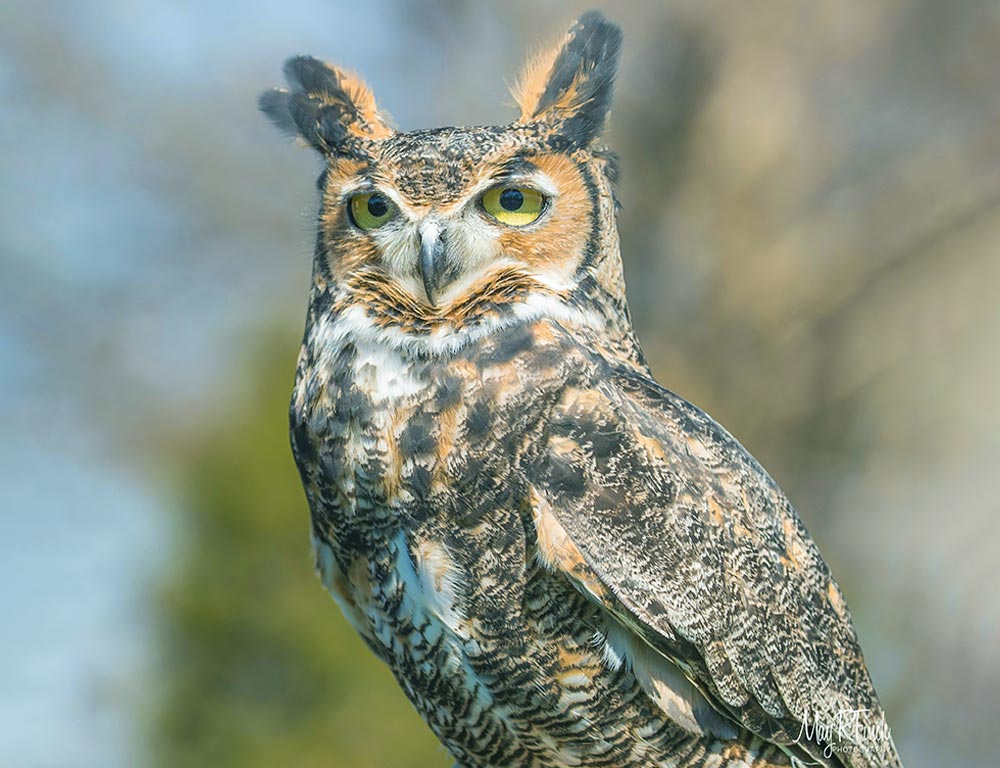
- Scientific name: Bubo virginianus
- Category: Bird of prey
- Population: Common and widespread
- Life span: 5 to 15 years
- Size: 18-25 inches
- Weight: 2-5.5 pounds
- Food: Carnivorous, preying on mammals, birds, and sometimes reptiles
- Wingspan: 3.3 to 4.8 feet
- Status: Least Concern
The Great Horned Owl, named for its prominent ear tufts resembling horns, is a formidable nocturnal predator found in various habitats throughout Virginia.
With its large size and powerful talons, it is a skilled hunter, preying on various animals, from small rodents to larger birds. Its adaptability contributes to its widespread population.
Great Horned Owls are known for their deep hooting calls during breeding. They often nest in abandoned nests of other large birds or even on cliffs. Mated pairs are monogamous, and they display strong territorial behavior.
These owls, with keen vision and excellent hearing, are well-adapted for nighttime hunting. Their silent flight allows them to approach prey stealthily.
The Great Horned Owl is vital in controlling rodent populations, making it a beneficial species in the ecosystem.
2. Barn Owl
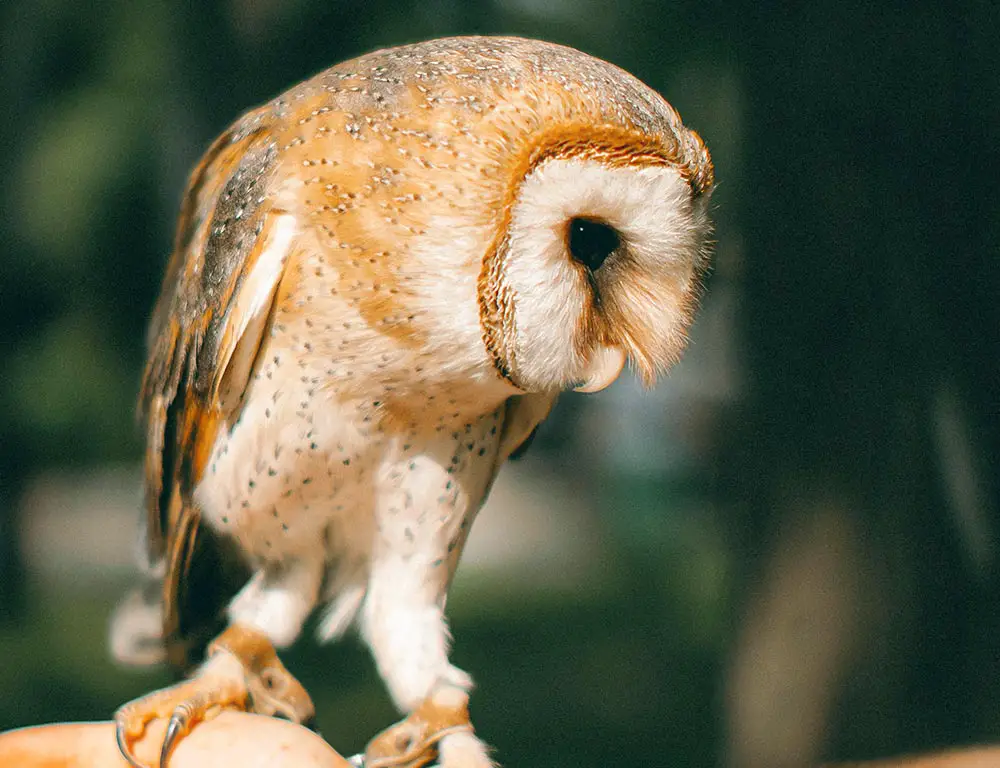
- Scientific name: Tyto alba
- Category: Bird of prey
- Population: Declining in some areas due to habitat loss
- Life span: 2-5 years
- Size: 12-15 inches
- Weight: 0.6-1.3 pounds
- Food: Mainly small mammals, especially rodents
- Wingspan: 38-47 inches
- Status: Near Threatened
With its heart-shaped facial disc, the Barn Owl is a distinctive and nocturnal hunter. It prefers open habitats such as farmland and grasslands.
Unfortunately, its population faces threats due to habitat loss and pesticides affecting its prey.
Barn Owls are silent flyers and primarily rely on their exceptional hearing to locate prey. They nest in cavities, barns, or specialized owl boxes.
Despite their relatively short lifespan, these owls play a crucial role in pest control by keeping rodent populations in check.
3. Barred Owl
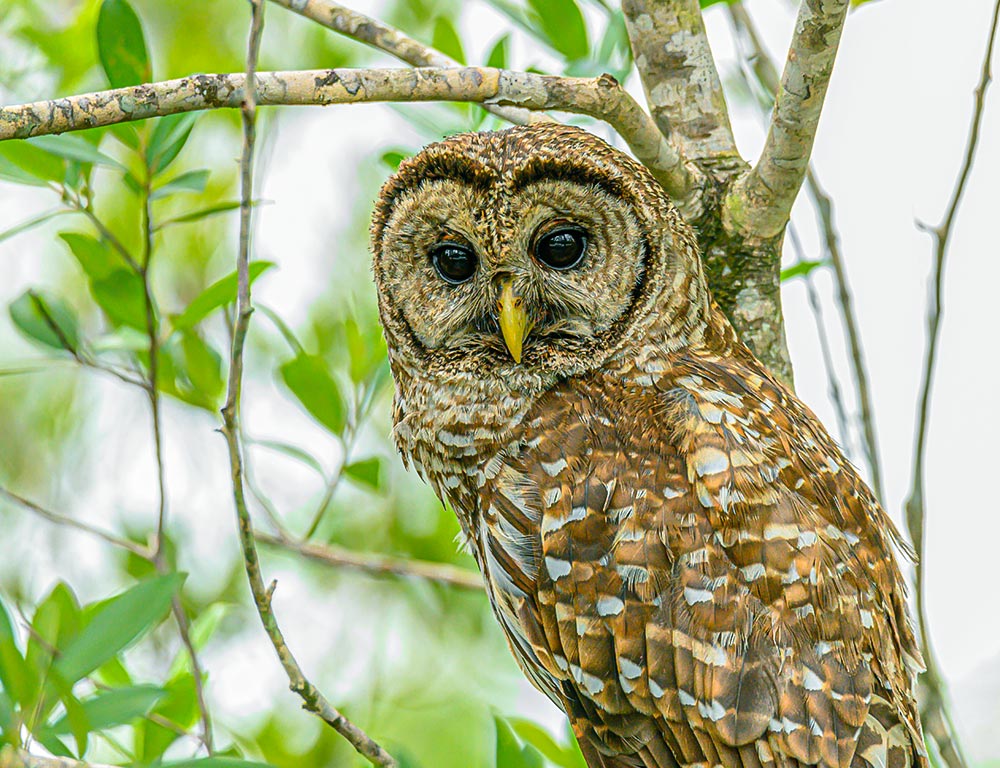
- Scientific name: Strix varia
- Category: Bird of prey
- Population: Stable
- Life span: 10 years
- Size: 16-25 inches
- Weight: 1-2.5 pounds
- Food: Small mammals, birds, amphibians, and invertebrates
- Wingspan: 38-49 inches
- Status: Least Concern
The Barred Owl, recognizable by its distinctive hooting call, inhabits mature forests and wooded areas in Virginia. Known for its dark eyes and barred plumage, it is a skilled hunter that preys on various small animals.
Barred Owls are adaptable and have successfully adapted to human-altered landscapes. They are monogamous and tend to maintain territories year-round. Their versatile diet and adaptability contribute to their stable population status.
These owls are effective predators, utilizing their sharp talons and keen senses to locate and catch prey.
Their presence is a valuable part of the ecosystem, helping control populations of small mammals and maintaining a healthy balance in the food web.
4. Eastern Screech Owl
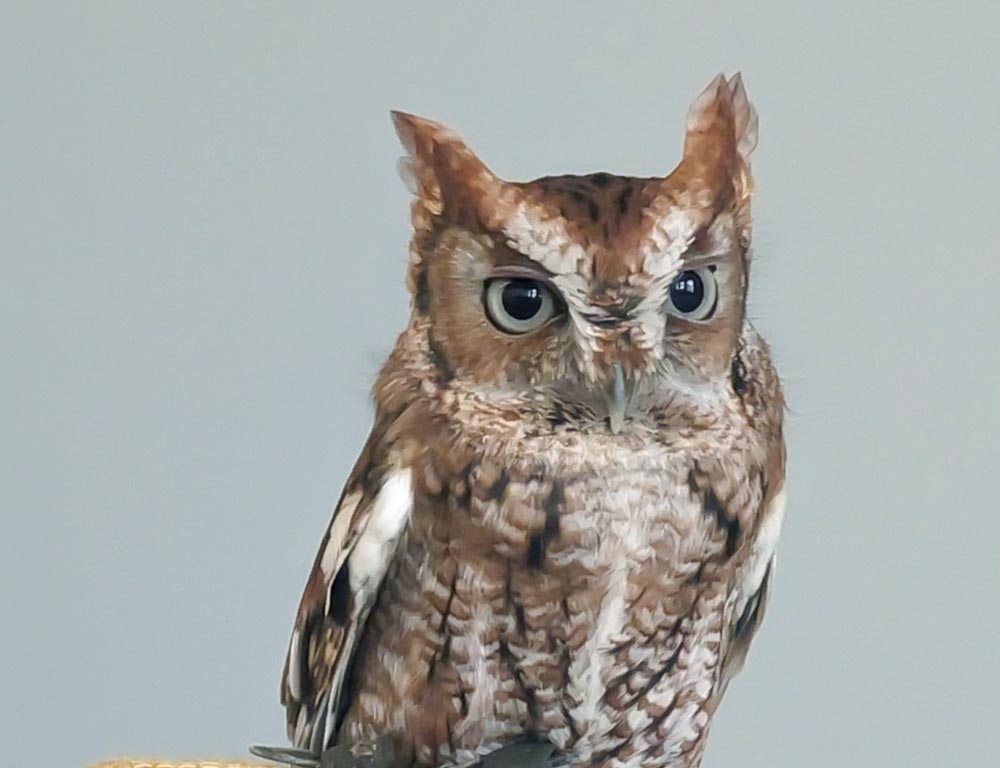
- Scientific name: Megascops asio
- Category: Bird of prey
- Population: Common
- Life span: 9-10 years
- Size: 6.3-9.8 inches
- Weight: 4-8 ounces
- Food: Small mammals, birds, insects
- Wingspan: 18-24 inches
- Status: Least Concern
The Eastern Screech Owl, with its small size and ear tufts, is a common resident of Virginia woodlands, parks, and suburban areas.
It comes in two color morphs, red and gray, providing excellent camouflage in different environments. These nocturnal hunters are adaptable, nesting in tree cavities and even using owl boxes provided by humans.
Eastern Screech Owls have a varied diet, preying on small mammals, birds, and insects.
Their haunting, trill-like calls can be heard during the breeding season. Despite their diminutive size, these owls are effective predators, playing a role in controlling insect and rodent populations.
5. Snowy Owl
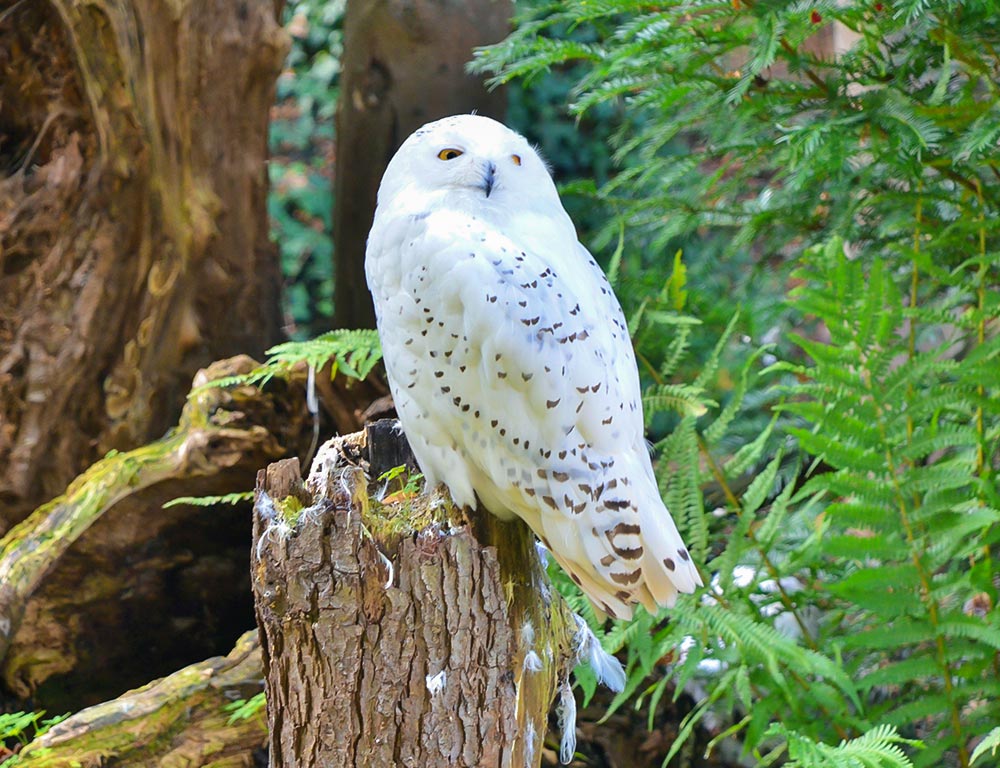
- Scientific name: Bubo scandiacus
- Category: Bird of prey
- Population: Varies with lemming cycles; can be irruptive
- Life span: 9.5 years (average)
- Size: 20-28 inches
- Weight: 3-6.6 pounds
- Food: Mainly lemmings, also birds and mammals
- Wingspan: 49-59 inches
- Status: Least Concern
The Snowy Owl, renowned for its striking white plumage, is a visitor to Virginia during winter, with occasional irruptions driven by lemming population cycles in the Arctic.
These diurnal hunters are adapted to the harsh tundra environment and are often seen perched on elevated positions.
Snowy Owls primarily feed on lemmings when available, but in their southern wintering grounds, they may prey on birds and mammals. They are known for their long migrations and are considered charismatic by birdwatchers.
6. Short-eared Owl
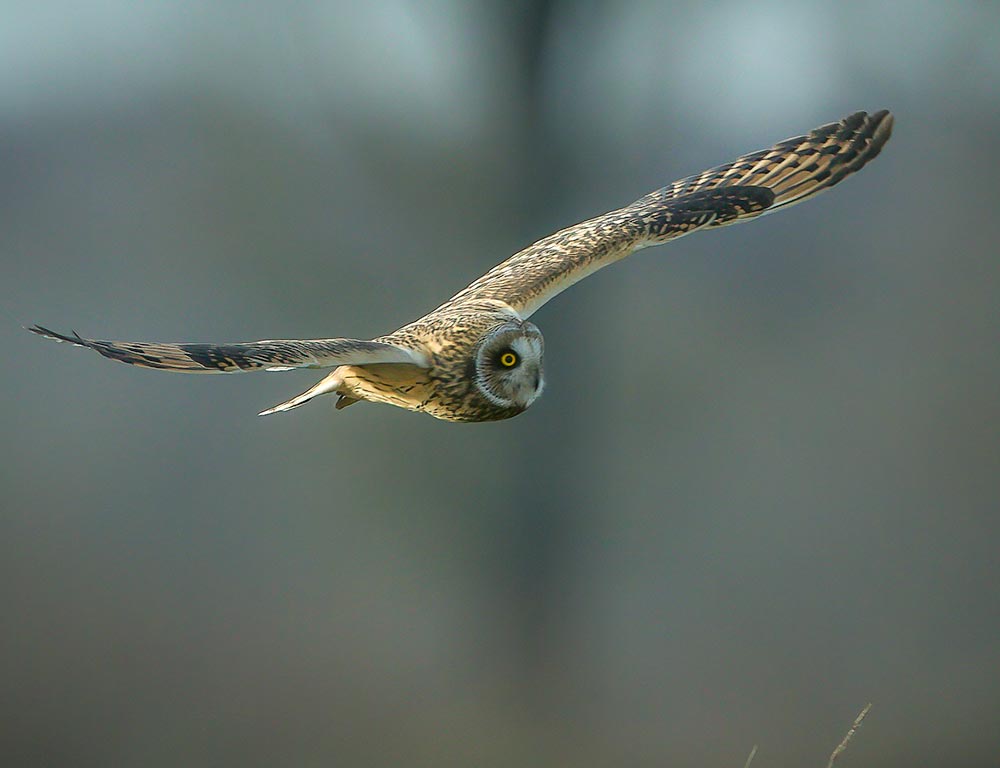
- Scientific name: Asio flammeus
- Category: Bird of prey
- Population: Declining due to habitat loss
- Life span: 4 years (average)
- Size: 13-17 inches
- Weight: 7-17 ounces
- Food: Small mammals, birds, and insects
- Wingspan: 33-43 inches
- Status: Near Threatened
The Short-eared Owl is a grassland and marshland inhabitant with a distinctive facial disc and short ear tufts. Unfortunately, their populations are declining due to habitat loss and degradation.
They are known for their diurnal hunting habits, often seen flying low over open areas. Short-eared Owls have a diverse diet, preying on small mammals, birds, and insects.
They nest on the ground in grassy areas, relying on their cryptic plumage for camouflage. Conservation efforts are crucial to ensuring the preservation of their habitats and preventing further population decline.
7. Long-eared Owl
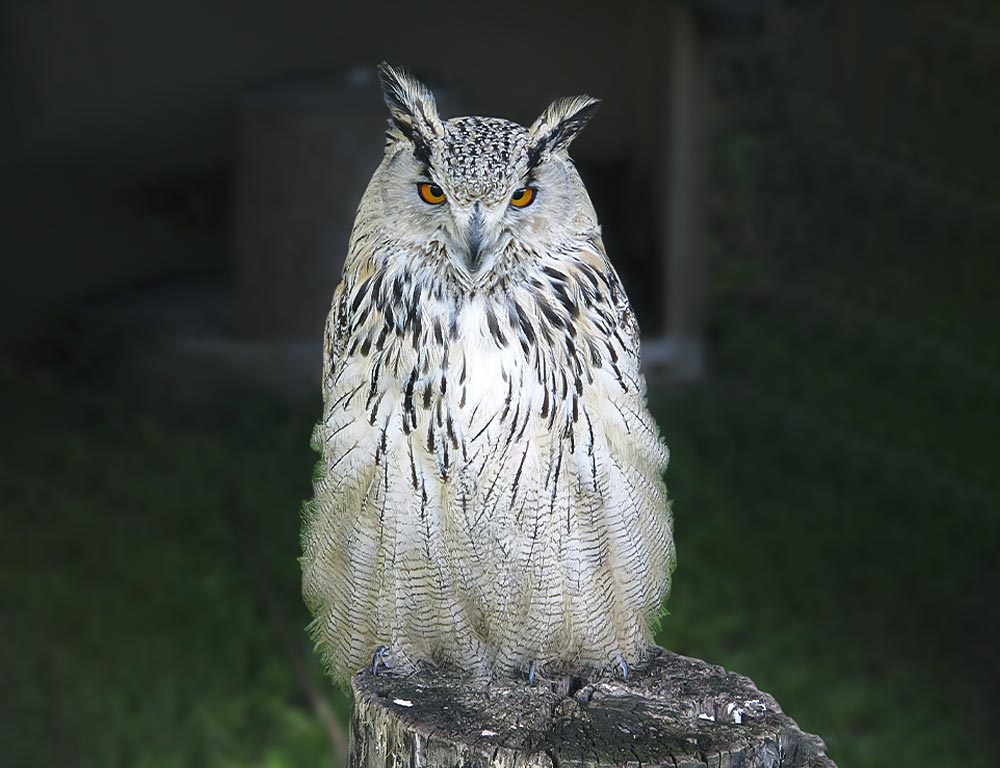
- Scientific name: Asio otus
- Category: Bird of prey
- Population: Stable, with some local declines
- Life span: 4-5 years
- Size: 13-16 inches
- Weight: 7-16 ounces
- Food: Small mammals, birds, and insects
- Wingspan: 35-42 inches
- Status: Least Concern
The Long-eared Owl is a medium-sized owl with prominent ear tufts that are often held erect. It inhabits woodlands, often favoring coniferous trees for roosting and nesting.
This owl is primarily nocturnal and is known for its habit of roosting communally during the non-breeding season.
Feeding mainly on small mammals, birds, and insects, Long-eared Owls use their keen hearing to locate prey. They are skilled hunters, flying silently through the night to capture their quarry.
Long-eared Owls may face threats due to habitat loss and disturbance, but their populations remain relatively stable overall.
8. Northern Saw-whet Owl
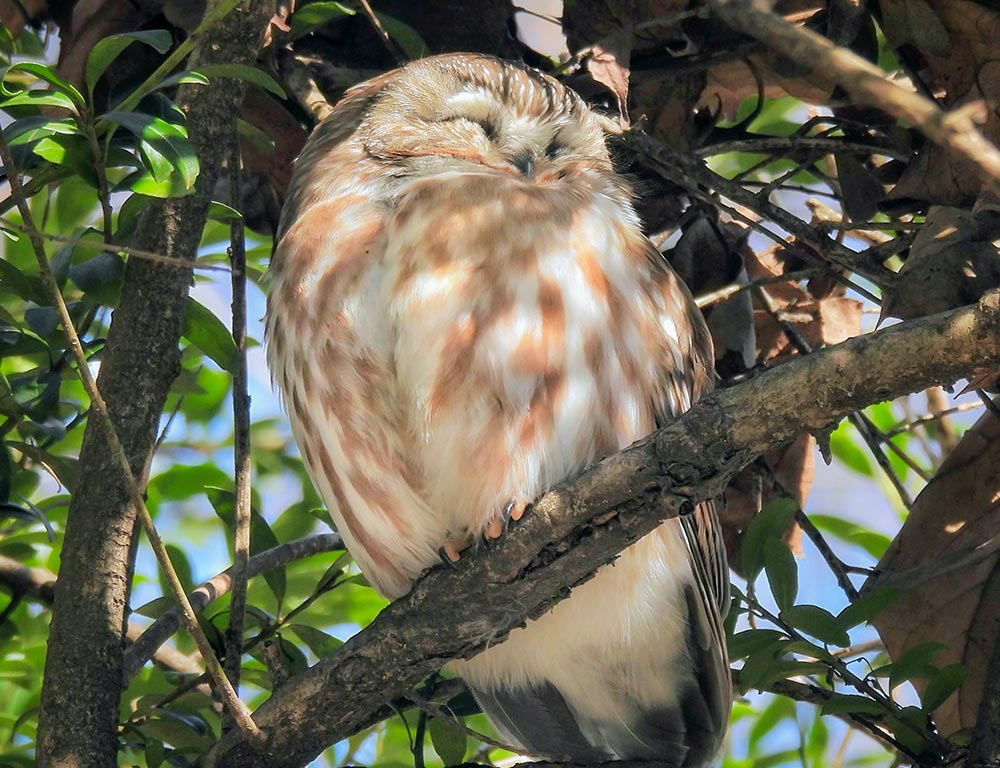
- Scientific name: Aegolius acadicus
- Category: Bird of prey
- Population: Stable, with some fluctuations
- Life span: 3-5 years
- Size: 7-8 inches
- Weight: 2-5 ounces
- Food: Mainly small mammals and birds
- Wingspan: 16-18 inches
- Status: Least Concern
The Northern Saw-whet Owl is a small owl with a distinctive saw-like call, named after its sound that resembles a sharpened saw.
These owls are generally nocturnal and are found in various forested habitats, including coniferous and deciduous forests.
Preying mainly on small mammals and birds, Northern Saw-whet Owls are efficient hunters. They use their excellent hearing and vision to locate and capture prey in the darkness.
Nesting in tree cavities or abandoned nests, these owls may face challenges due to habitat loss and urbanization, but their populations remain stable overall. The Northern Saw-whet Owl is a fascinating species, and its secretive nature adds to its allure for bird enthusiasts.
Steps to Increase the Number of Owls In Virginia
Preserving the balance of ecosystems in Virginia necessitates a proactive approach to support the flourishing owl population. These majestic birds are vital in controlling pest populations and maintaining ecological harmony.
Here are some of the actionable steps to enhance and safeguard the number of owls in the state.
Habitat Conservation
Preserve and restore diverse habitats, ensuring a mix of woodlands, grasslands, and wetlands to accommodate the nesting and foraging preferences of various owl species.
Education and Awareness
Raise public awareness about the importance of owls in maintaining ecological balance. Encourage responsible birdwatching and educate communities about the significance of owl conservation.
Nest Box Programs
Implement and promote nest box programs specifically designed for different owl species. Provide suitable nesting sites, especially in areas where natural cavities may be limited due to urbanization.
Minimize Pesticide Use
Advocate for and implement sustainable agricultural practices to reduce pesticide usage. Pesticides can harm owl populations by affecting their prey, making it essential to promote environmentally friendly farming methods.
Protected Roosting Sites
Identify and protect roosting sites critical for owls during non-breeding seasons. Preserve undisturbed areas where owls can roost and find shelter, minimizing human interference.
Community Engagement
Foster community involvement through citizen science initiatives. Encourage residents to report owl sightings, nesting activities, and any potential threats, creating a collaborative effort for owl conservation across the state.
Wrapping Up
In the silent wings and watchful eyes of Virginia’s owls, we discover not just birds but integral pieces of a thriving ecosystem.
From the majestic Great Horned Owl to the enchanting Eastern Screech Owl, each species tells a unique tale of adaptation and survival. These nocturnal inhabitants play vital roles in pest control and ecosystem balance.
As we unveil their secrets, let us embrace the responsibility to protect their habitats and ensure the continuation of their stories in Virginia’s landscapes.
By understanding and appreciating these captivating creatures, we embark on a journey to safeguard the magic of the Old Dominion’s natural heritage. Thank you so much.